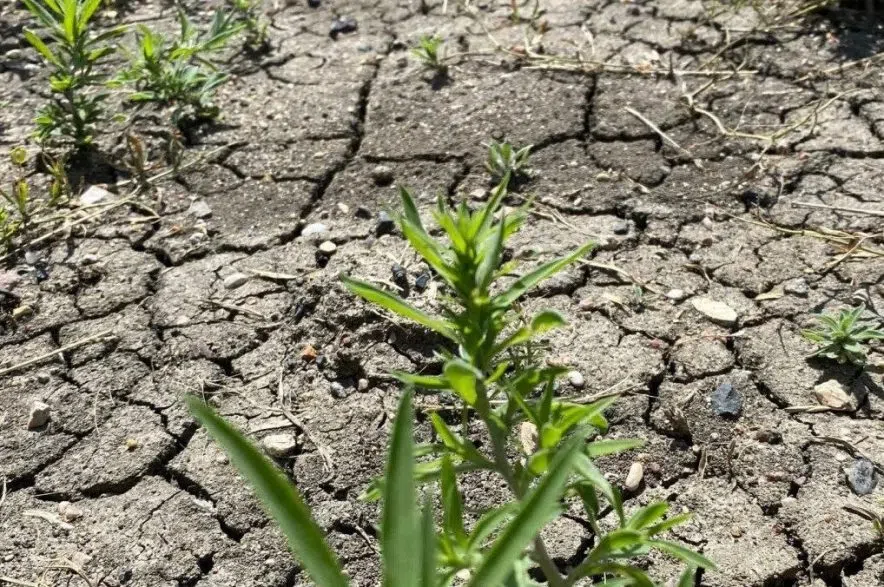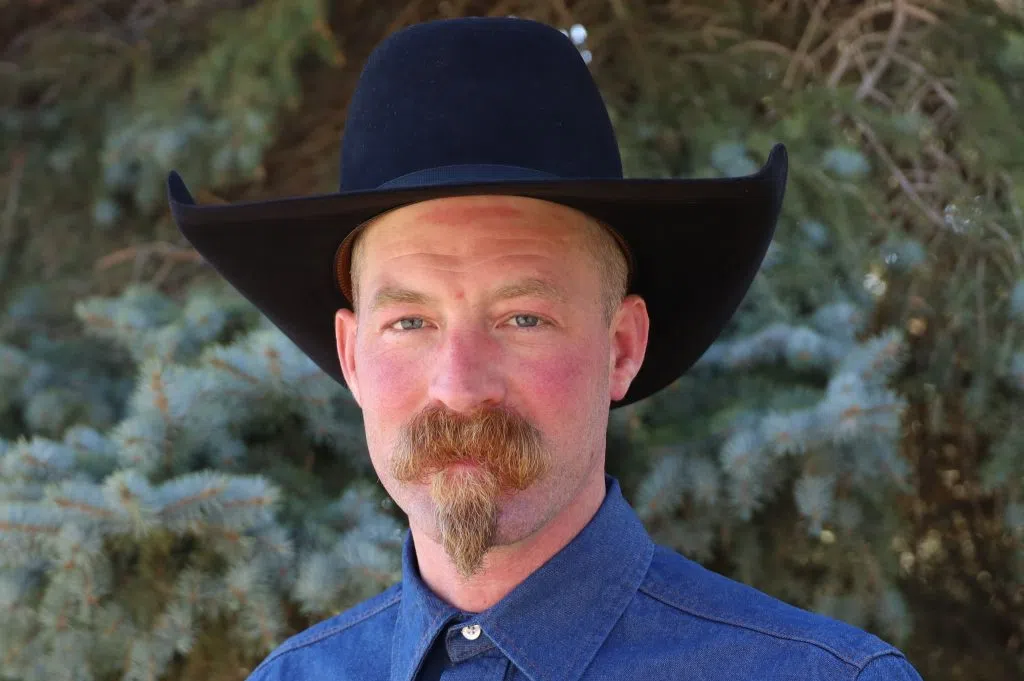Despite some recent moisture, many farmers are staring down drought conditions in southwestern Saskatchewan.
Randy Stocky has a cattle farm around the village of Consul. He said that recent rainfall did help his grass a bit, but it did so in an uneven manner, as some areas got more rain than others.
“Some areas got a little over an inch, and some areas only got three to four tenths (of an inch),” Stocky said.
“It was a little too late for our dry land hay in the area, there’ll be none of that. Some of the early crops are in pretty poor shape–poor germination and they’re getting pretty spotty.”
Read more:
- Sask. producers struggling with dry conditions despite rainstorms: Crop Report
- ‘Worst we’ve seen’: Maple Creek, Enterprise join growing list of RMs declaring drought emergency
- ‘This is different’: Southwest Sask. farmers call for help after nearly a decade of drought
Stocky said he normally buys hay locally, but since local producers are having a hard time growing it from the lack of rain, he’ll have to look to alternatives.
“We’re probably going to send our cows to a feedlot for the winter instead of hauling hay to the cows,” he said.
If the drought continues, Stocky said his operation would have to downsize, which it has done in the past.
“You can’t buy your way out of a drought,” he said.
He added that the province needs better or improved programs to help producers facing extended droughts.
“AgriStability does not work very well for cow or calf people; we need some different recommendations to improve it,” Stocky said.
“(The recommendations) are out there, and the government doesn’t want to give out cash payments, so we need to improve the programs we have so they actually work for the cattle producers.”
Cyle Stewart with the Saskatchewan Cattlemen’s Association is another producer exploring different feeding options.
His cattle farm is in the RM of Morse.
“Like 95 per cent of the hay in the south here is dry land, so if we don’t get the moisture from the skies, then it doesn’t grow really well. So, there’s a drop in production on those acres,” Stewart said.
Stewart said for some of the producers he’s spoken to, the best-case scenario for them would be yielding half of what they’d normally yield from hay.
“Some fields are not even worth cutting because of the yields. There’s going to be quite a shortage,” Stewart said.
He said many producers look to business risk management tools like calf insurance, crop insurance and rainfall insurance during droughts – though he said rainfall insurance needs to be modified to better help farmers.
Stewart explained that producers might also explore securing hay from areas that receive lots of rain prior to the start of the season.
“It will be interesting how the grass can hold up from here on out,” Stewart said.
“If we get some timely showers, maybe it’ll stay ahead of the cattle and if we don’t – it might be a case of getting rid of calves early, or downsizing the herd again, like the last number of years.”
In times like these, Stewart said it was important for farmers to look after their mental health and recommended resources like Sask Ag Matters mental health network.
980 CJME reached out to the Government of Saskatchewan for a response, but did not hear back before publishing.












